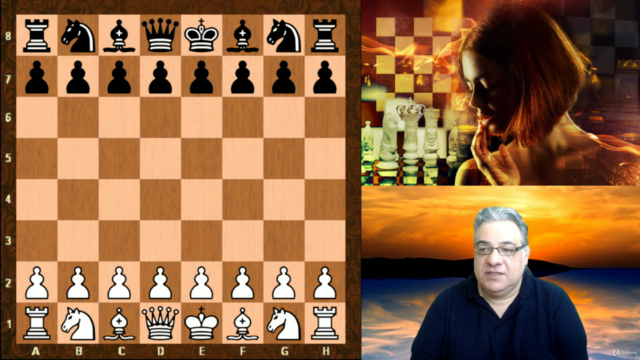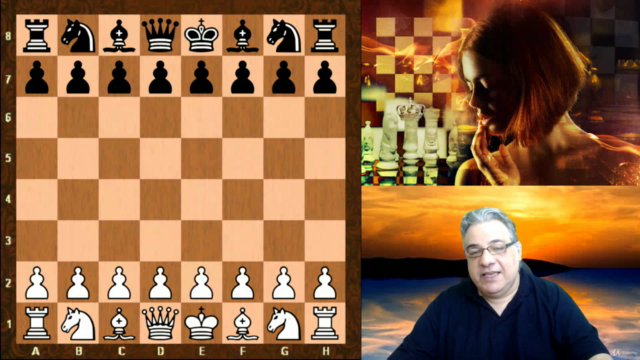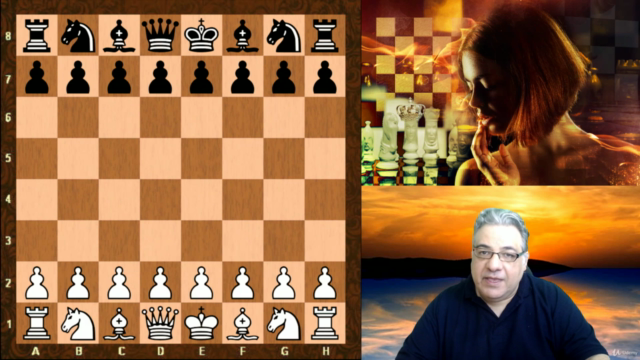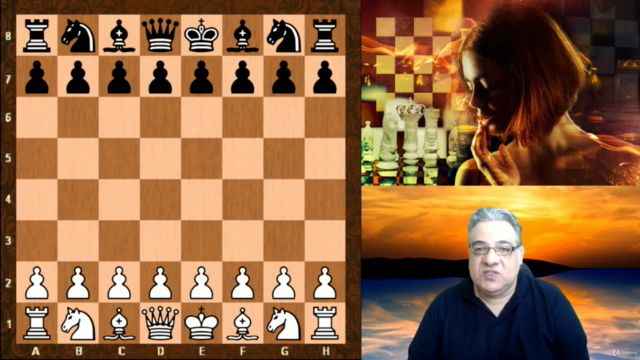The Complete Guide to Chess for Beginners (Rated 0 to 1500)
Learn Chess Mastery: From Zero to Hero: Master Rules, Openings, Strategy, Tactics, and Endgames Comprehensive Course
4.57 (663 reviews)

6,945
students
40.5 hours
content
Jul 2024
last update
$79.99
regular price
What you will learn
Be able to appreciate the fundamentals of chess - opening, middlegame, endgame and within those the most common and important ideas
Be able to get a complete overview of the key fundamentals of chess in terms of the Opening, Middlegame and Endgame phases of the game
Be able to know basic opening traps such as the Fool's mate, Scholar's mate and many others
Be able to know basic endgame mating patterns such as two rooks vs King, Rook vs King, Queen vs King
Be able to know basic middlegame mating patterns such as back row mate and Smothered mate
Be able to see Chess is a way of maximising your value chain - opening, middlegame, endgame and other skills like psychology, maximising win probability
Be able to know the basic pawn structures which often result from many different openings such as the Isolated Queen's Pawn, Doubled pawns, Hanging Pawns
Be able to know about the major world chess champions and their value-chain strengths such as Steinitz, Lasker, Capablanca, Fischer, Karpov, Kasparov
Be able to understand many of the chess terms, and games and puzzles in Netflix Queen's Gambit popular series in a detailed episode by episode manner
Be able to know how to handle the basic opening traps of Chess and how to set them up for unsuspecting opponents such as an early Queen to h5 attack
Be able to appreciate the most important fundamentals of Kingscrusher's more advanced courses and be able to advance onto them later like a jigsaw puzzle
Be able to appreciate the rules of chess for both casual play and later tournament play so you don't risk losing games uncessarily
Be able to see plenty of examples of the most important chess tactics which will win you many games and enable you to see the true beauty of chess
Be able to use Opening Systems which can be largely independent of what the opponent does such as the London System, Torre Attack, Colle System
Be able to know the basic ideas and plans of major Chess openings susch as the French Defence, Sicilian Defence, Nimzo Indian, King's Indian, Slav Defence
Be able to make use of fun exciting chess gambits which can help stretch and train your tactical abilities such as the King's Gambit
Be able to make use of key middlegame tactics such as forking, skewering, double attacks, discovered attacks, removing the defender, deflections and more
Be able to leverage essential endgame concepts and positions such as "Rule of the Square", Triangulation, the Vancura Defence, the Lucena position and others
Be able to appreciate strong middlegame processes which prioritise forcing moves and enable you to calculate potentially many moves ahead
Be able to leverage many important crystalised improving tips and winning tips gained from years of experience of Kingscrusher
Be able to appreciate the instructive value and importance and humour of many famous chess quotations from masters of the past in their thoughts
Screenshots




Related Topics
4044560
udemy ID
5/12/2021
course created date
6/27/2021
course indexed date
Bot
course submited by